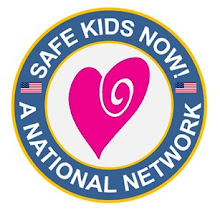America has slowly evolved from “In God we trust” to the “me generation” demanding rights without a sense of responsibility to neighbors or community. The loss of community involvement has contributed to the growth of criminal gangs. When families break down, children can become angry. They can find comfort and support through gangs, sex and drugs.
The FBI reports the peak age for burglary is 16 and violence, age 18. Without correction, children fill the void with a false sense of power. Without responsible adults, a teen can steal or assault another child without guilt.
Police, schools and community leaders are struggling to cope, but children need adults to speak up and support each other.
As a crime prevention coordinator, I was facilitating a meeting of neighbors. After discussing ways to stop burglars, a neighbor asked what to do about two boys, 7 and 9 who were bullying her children. Other neighbors added the boys stole from a garage, broke several flowerpots and smashed a mailbox. A man said he had told the mother, “Get your boys under control” and she slammed her door. The group decided they could not let two young boys disrupt their lives but they needed a positive approach. Two tactful neighbors agreed to talk to the mother and offer help. The mother not only listened by burst into tears and said her husband had left. Neighbors decided to help and several men became mentors and families included the boys in their activities. Today they are successful students, one in high school and the other in college.
There are 28,000 gangs in the US and nine youths die every day from violence. Neighborhood support is critical for struggling families. Isolation creates an environment for crime, vandalism and domestic violence as citizens seek refuge behind locked doors. Americans are paying a high price.
We are at a crossroads. Citizens can restore the social fabric of communities.
Ten ways YOU can help stop gangs and destructive behaviors:
1. Help children learn how to become centered by taking your family to church. Children become strong and resilient by learning how to handle their emotions. Self-esteem is a “do it yourself,” project of looking within and changing ourselves. A strong conscience protects us, provides guidance and self-control.
2. Create a network of love and support with a peaceful home life and connecting to positive family members, neighbors and a church family.
3. Teach children the buddy system and street smarts. Encourage them to listen to their self-protective instincts and trust their intuition to avoid danger.
4. Include children in your home safety program: how to secure your home, how to answer the door and phone, what to do when home alone or in an emergency.
5. Create a safe neighborhood by working with neighbors. Join a neighborhood group or start one.
6. Establish a block parent program and designate a safe house on the block.
7. Conduct a neighborhood safety survey: Do you have overgrown shrubs, adequate lighting, open drainage, speeding cars, abandoned houses, drug dealers or gangs? Work with neighbors to solve problems.
8. Report criminal activities or designate neighborhood leaders willing to report to police.
9. Encourage city leaders to appoint a volunteer committee to promote community involvement and youth safety projects. Increase communication with local support agencies. Invite responsible teens to participate in teen courts and neighborhood groups.
10. Ask existing groups (churches, civic groups) to help organize after-school activities, start neighborhood newsletters, sponsor block parties and help clean up neighborhoods. Groups can reach out and help citizens get connected so gangs will not attract youth.
Responsible adults, take charge! We can create safe communities when children see positive role models and learn acceptable behavior.
Americans can reduce fear and restore trust by creating neighborhood support. We will stop gangs when adults work together for safe, healthy communities for everyone, especially for our children.
Stephanie L. Mann, Crime and Violence Prevention Consultant
For more information see, The Adopt-A-Block Guidebook, on www.safekidsnow.com
Wednesday, January 25, 2012
Subscribe to:
Posts (Atom)




